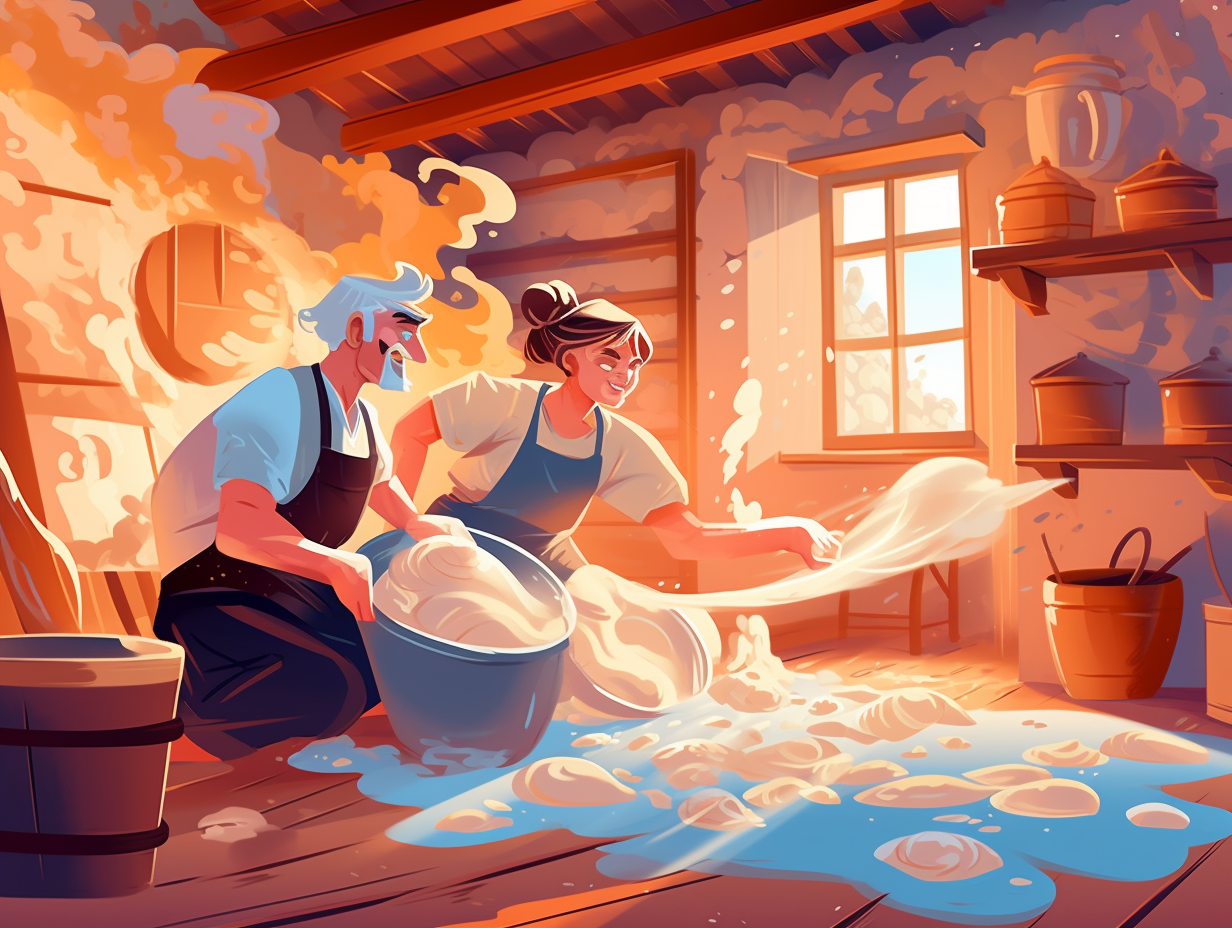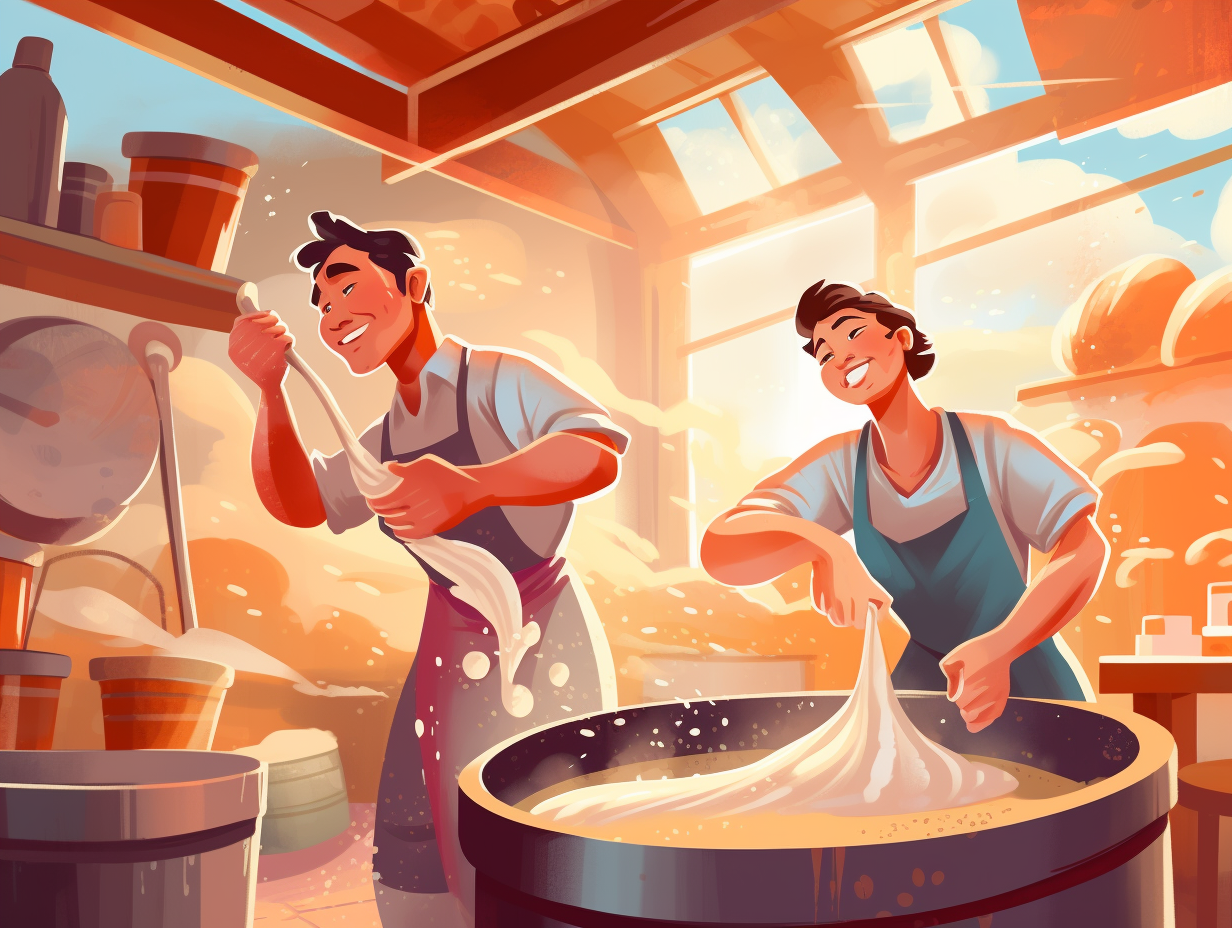From Grain to Greatness: 12 Amazing Flour Fun Facts You Won't Believe!

1. Ancient Egyptian Bread
Bread for the afterlife, but not to build the afterworld: Contrary to what one might assume, flour in Ancient Egypt wasn't specifically used to feed the laborers who built the pyramids. Archaeological findings revealed bakeries near the pyramids, but they likely catered to a broader audience beyond just the workers, and the bread they baked wasn't as soft and fluffy as the modern fare due to the low gluten content in their emmer wheat.
Source => ancientegyptalive.com
2. Wig Powder War on Lice
In an age where "flour power" took on a whole new meaning, 18th-century folks waged a war on lice by enlisting the help of the unlikeliest ally - flour from their pantry: Used as a wig powder, flour absorbed oil and transpiration that made an inviting home for parasitic pests, whilst British military officers redefined the term ‘breadwinners’ by generously coating their fake plaits attached with ribbons in flour - a clever (but pricey) technique, since it was deducted from their own weekly rations!
Source => battlefields.org

Did you know ancient Egyptians used bread loaves as currency? Discover how they standardized sizes and nutritional values to ensure fair payment! 🍞💰
=> Fun Facts about Bread
3. Pirates' Hardtack Snack
Ahoy mateys, is your taste in food as dry as a pirate's wit? No worries, there's a hidden treasure for that: flour, salt, and water can be combined to create an age-defying snack called hardtack, which pirates stashed in their ships for epic voyages! Surviving years without a hint of mold, this tough biscuit could be dunked in ale, soup, or coffee to regain some semblance of a meal, or fried in animal fat when booty was abundant!
Source => historyundressed.com
4. DIY Wallpaper Paste
Who needs glue when you've got groceries? DIY enthusiasts, take note: flour, alum powder, and water make an excellent wallpaper paste that's cheap, natural, and easy to reposition. This unassuming combo will leave both you and your walls in awe as it performs better than store-bought options. But wait, there's history: alum, a double salt of potassium and aluminum, has been used for its adhesive properties in various industries for thousands of years, even dating back to ancient Egypt as a flame retardant.
Source => wallpaperfromthe70s.com

5. Baker's Asthma
Baker's blues: not just about burnt cakes but potentially leaving them breathless too! Inhaling flour dust over many years can lead to occupational asthma, also known as baker's asthma, and may become worse if the flour contains artificial sweeteners, flavouring, or colouring.
Source => worksafebc.com
6. Flour Particle Sizes
Get ready to roll in the dough with this flour power fact: Flour particles' size matters in baking, as finer particles provide better hydration and dough consistency, making a scrumptious, top-notch baked good, while coarser particles may lead to a hydration disaster and a sad, low-quality treat.
Source => bakerpedia.com
7. Aztec Superfood Pinole
Pinch me, I'm pinol-ing with delight! This Aztec snack might just be the cereal thriller you never knew you needed: Meet pinole, a Mexican powerhouse made from ground corn, chia seeds, piloncillo, and cinnamon, once used by Aztecs to fuel their long journeys, and still enjoyed by the Rarámuri runners of today as a superfood for their epic expeditions, as well as starring in traditional dishes like atole, esquiate, watónali, and tejuino, and even making special appearances in cookies, candies, and beverages!
Source => maricruzavalos.com
8. Flour Bleaching History
Before Clorox dabbled in your laundry and chlorine took laps in your pool, they birthed Snow White's secret ingredient for forest bakes: Flour bleaching is a process using chemicals like chlorine gas, chlorine dioxide, nitrogen dioxide, calcium and benzoyl peroxides, and azodicarbonamide to remove pigments from milled grains, resulting in a finer-grain flour ideal for cakes, cookies, and quick breads. Developed in response to a 1906 Congressional Act addressing chemical additives, some bleaching agents only served as whiteners, while chlorine-based ones improved baking quality by enhancing cake batter viscosity and dough machinability. However, countries like the EU, Canada, UK, and China have since banned flour bleaching.
Source => bakerpedia.com
9. Play-Doh's Humble Origins
In a plot twist worthy of Hollywood, Play-Doh began its star-studded journey as a humble wallpaper cleaner before pivoting to international fame as the go-to toy for budding sculptors everywhere: Originally created with only flour, water, and salt, it took a discerning teacher to realize its malleable potential. The recipe underwent a glow-up, adding a starch-based binder, borax, and a petroleum additive to perfect its texture, and voilà – over 2 billion cans sold, and an induction into the National Toy Hall of Fame!
Source => en.wikipedia.org

10. Albion Mills: Rise and Fall
Before the dough hit the fan: The Albion Mills in Southwark, London was the first commercial flour mill in the UK, powered by a 50 horsepower steam engine. However, in 1791, a suspicious fire destroyed the mill, leaving over 500 people jobless and independent millers rejoicing over the demise of their monopolistic rival.
Source => historyofinformation.com
11. Sweet Potato Flour
Sweet potato flour walks into a bakery and orders a French baguette: "Je suis une pomme de terre douce et j'ai un appétit pour le pain!" That's right, this versatile tuber even gets a laugh from the gluten-rich wheat crowd. Bon appétit: sweet potato flour not only boasts high antioxidant levels, but also helps lower blood sugar levels in diabetics. Catch it mingling with bread, pancakes, and pasta recipes, making those dishes more nutritious with a tasty twist!
Source => liebertpub.com
12. Almond Flour Superpowers
Move over, wheat flour – there's a new flour in town that's nutty, bold, and can rock the gluten-free crowd's world like a superhero from the Almondine Universe: Almond flour is not only a fantastic gluten-free alternative but is also packed with great nutrients such as vitamin E, magnesium, and fiber, and may even help reduce LDL cholesterol and improve insulin function. Talk about nut-ceptional benefits!
Source => healthline.com
Related Fun Facts




















